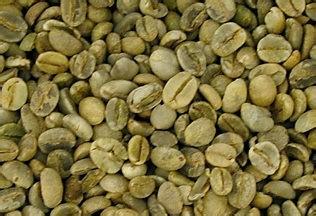The origin of grinding scale of yellow bourbon coffee beans at Queen's Manor in Mojiana, Brazil.
The origin of grinding scale of yellow bourbon coffee beans at Queen's Manor in Mojiana, Brazil.
Coffee is now cultivated in new places inland, thanks to natural benefits. Panama became famous after the war as a new coffee producer in Brazil, and because its natural conditions are not superior, it is still inferior in quality compared with that produced in Sao Paulo. Now in the northern part of the state of Sao Paulo, Riberon, Bredo, and Franka, the interior of Mogianashi is the best producer of Brazilian coffee.
Flavor features: BlackBerry, strawberry jam, sweet orange, wine, apple, honey, long finish, mellow thickness
Chelba is a boutique coffee and raw bean cooperative located in the Gedeo area of Yegashefi. There are about 700 smallholder growers in the Gedeo area who send the harvested coffee fruits to the Chelba cooperative's processing plant for centralized processing. The average planting area of these small growers is 2 hectares. The total area of coffee cultivation in this area is about 888 hectares. The planting height is 1900 to 2100 meters above sea level. The local climate is suitable, with a temperature of 25 ℃ during the day and 18 ℃ at night. They plant coffee trees next to self-sufficient crops and crops that raise livestock. The main local shading tree species are: Acacia, Luohansong and so on.
Brazil has also proved to be able to produce gourmet coffee and small quantities of coffee, and the local boutique coffee can not only be provided by small-scale coffee farmers. The main coffee producing areas in Brazil are Sulde Minas South Minas, Matas de Minas Minas South East Mountain Forest, Cerrado Hirado, the north-central mausoleum of Chapadas de Minas Minas, Mogiana, Paran á Parana and Bahia Bachia. There are both traditional varieties and variants, such as Bourbon, Mondo Novo Mondonovo, Icat ú Ikatu, Kaduai, Iapar, cultivatedcard Taiyi.

Important Notice :
前街咖啡 FrontStreet Coffee has moved to new addredd:
FrontStreet Coffee Address: 315,Donghua East Road,GuangZhou
Tel:020 38364473
- Prev

Brief introduction of taste grinding scale for taste description of El Salvador Pacamara coffee beans
El Salvador Pacamara coffee beans taste description taste grinding scale brief introduction Salvadoran coffee ranks side by side with Mexico and Guatemala as the producer of Asa and Merdo, and is fighting for the top one or two places in China and the United States with other countries. The highlands of origin are large coffee beans of all sizes, which are fragrant and mild in taste. Like Guatemala and Costa Rica, El Salvador
- Next

Flavor characteristics of Yega Snow Coffee beans in one of the highest Coffee producing areas
The flavor characteristic of Yejia coffee beans G2 how to brew Yega Chevy, it is not as sour as rumored, it is as sour as lemon, it has its own unique aroma, similar to rose, jasmine, nectar, acidity is similar to citrus, orange pulp is as round, sweet is mainly chocolate or cocoa, under the correct baking degree, Yejasuffe is as bright as plum and aftertaste.
Related
- Detailed explanation of Jadeite planting Land in Panamanian Jadeite Manor introduction to the grading system of Jadeite competitive bidding, Red bid, Green bid and Rose Summer
- Story of Coffee planting in Brenka region of Costa Rica Stonehenge Manor anaerobic heavy honey treatment of flavor mouth
- What's on the barrel of Blue Mountain Coffee beans?
- Can American coffee also pull flowers? How to use hot American style to pull out a good-looking pattern?
- Can you make a cold extract with coffee beans? What is the right proportion for cold-extracted coffee formula?
- Indonesian PWN Gold Mandrine Coffee Origin Features Flavor How to Chong? Mandolin coffee is American.
- A brief introduction to the flavor characteristics of Brazilian yellow bourbon coffee beans
- What is the effect of different water quality on the flavor of cold-extracted coffee? What kind of water is best for brewing coffee?
- Why do you think of Rose Summer whenever you mention Panamanian coffee?
- Introduction to the characteristics of authentic blue mountain coffee bean producing areas? What is the CIB Coffee Authority in Jamaica?

